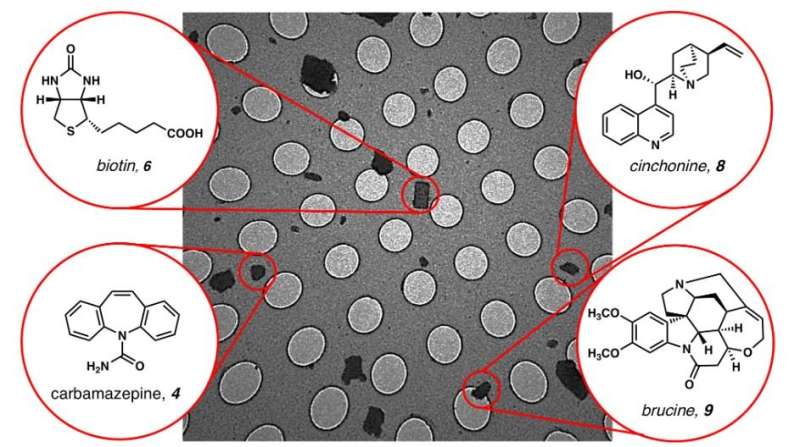October 24, 2018 report
Electron crystallography found to work as well as X-ray crystallography only on smaller crystals

Two teams working independently have shown that electron crystallography can work as well on smaller crystals as X-ray crystallography does on larger crystals. The first team was made up of members from several institutions in Switzerland and Germany—they have published a paper describing their work in Angewandte Chemie. The second team was made up of members from the University of California and the Howard Hughes Medical Institute—they have uploaded a paper describing their work to the ChemRxiv preprint server. Both teams used similar methods in their work, and both used it to show the structure of over-the-counter medicines.
Until now, chemists have had two main tools to discern the structure of crystals. The first, and most often used, is X-ray crystallography. In this approach, X-rays are fired at a crystal and researchers note the diffraction patterns to determine the crystal's chemical structure. The second tool, called nuclear magnetic resonance spectroscopy, works indirectly by disturbing the magnetic behavior in the atoms that make up a crystal and noting their behavior. The one main drawback of both of these tools is that they cannot be used to determine the structure of very small crystals. In this new approach, both teams replaced X-rays in the first tool with an electron beam to determine the structure of very small crystals. After firing at a crystal target, its structure can be determined by studying the resulting diffraction patterns.
Both of the teams used the new approach to study the crystal structure of over-the-counter medicines to demonstrate how it can be used. They also both used the technique to study larger crystals—the team working in Switzerland used it to find the structure of a methylene blue derivative. The team at UoC did the same with thiostrepton.
Both teams note that the technique is very quick and very accurate—and it only works with crystals. Also, it can only be used to study relative, not absolute stereochemistry. Both teams also note that widespread use of the technique is likely to be limited due to the cost of the equipment.
More information: Tim Gruene et al. Rapid structure determination of microcrystalline molecular compounds using electron diffraction, Angewandte Chemie International Edition (2018).
The CryoEM Method MicroED as a Powerful Tool for Small Molecule Structure Determination, ChemRxiv,
Journal information: Angewandte Chemie , Angewandte Chemie International Edition
© 2018 Â鶹ÒùÔº





















